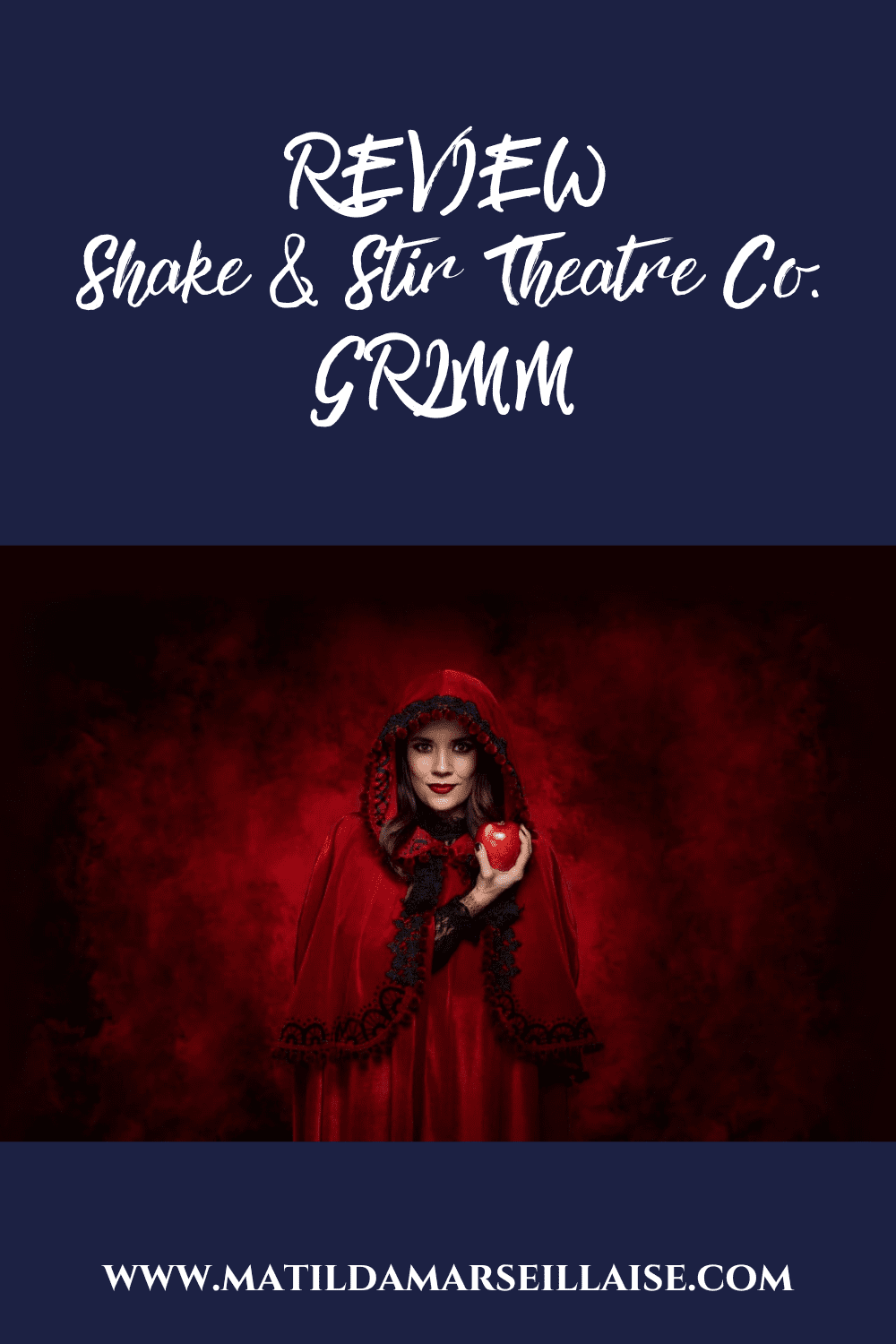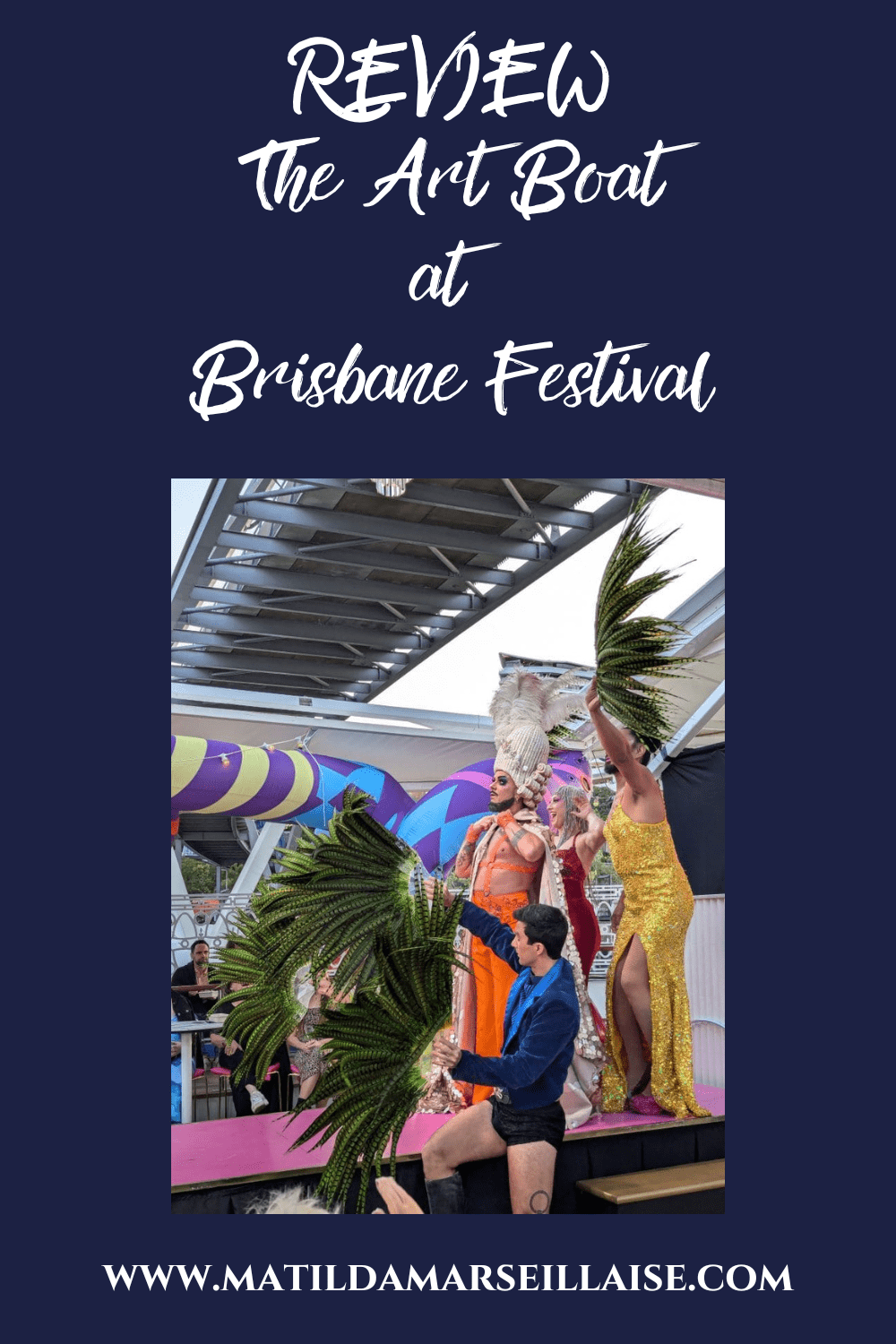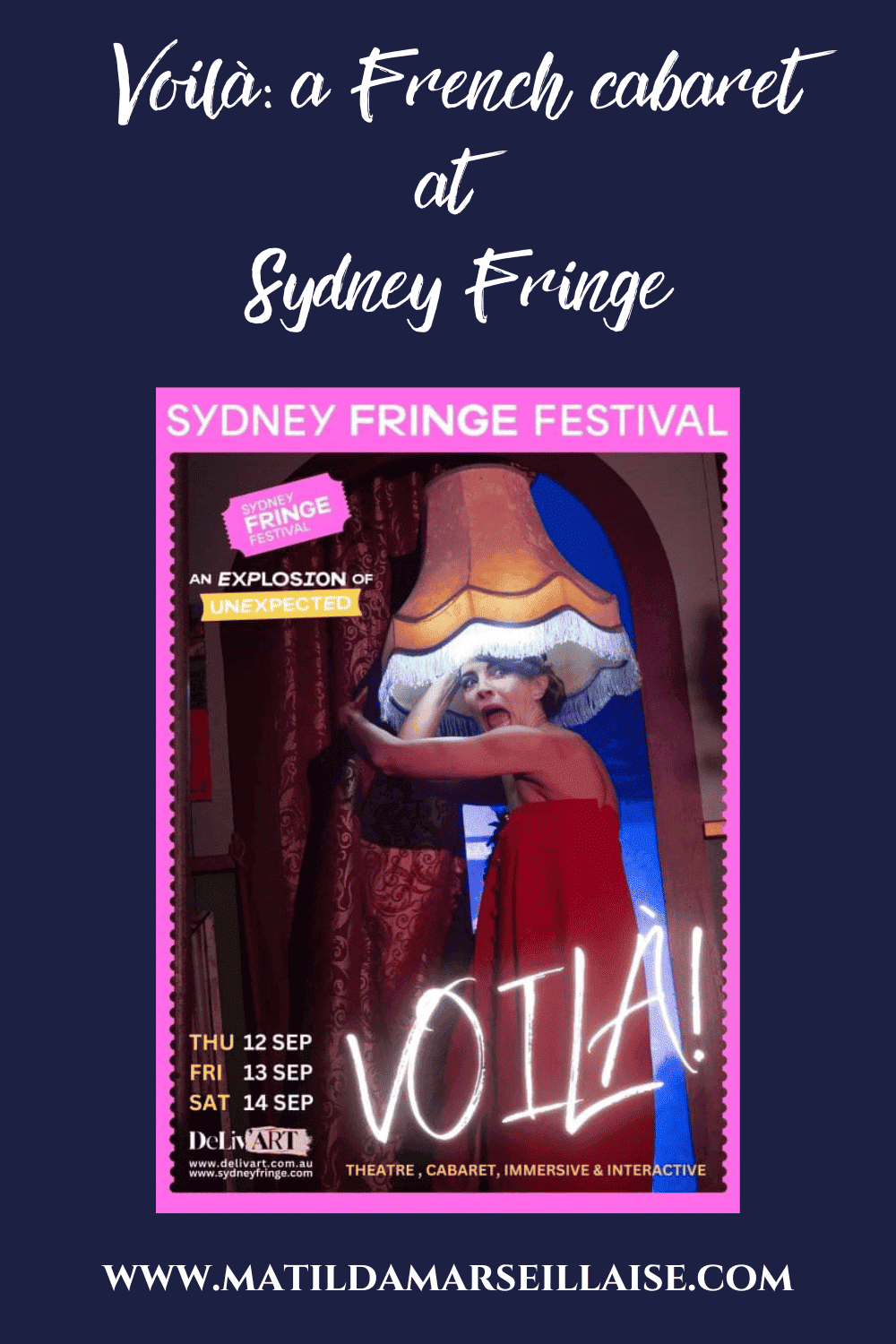Pauline Calmé will “Unleash the beast” in her solo improvised show “La bête de scène” which will be performed at the Butterfly Club in Melbourne in March. She speaks to us about the show and about improv.
Tell us about your show “La bête de scène” (Unleash the beast).
“La bête de scène” (Unleash the beast) is an entirely improvised one-woman show. I will perform from 9 to 14 March 2020 in Melbourne, at the Butterfly Club (Carson Place), at 7pm. The shows on 11 and 12 March will be in French, and those of 9, 13, 14 March, in English. In improvisation jargon “La bête de scène” (Unleash the beast) belongs to “free form” shows, that is shows that do not have pre-established structures that set out the way in which the show will unfold. I called it “La bête de scène” (Unleash the beast) because it is a good way of representing the spirit’s state. To be an animal: instinctive, corporal and in the present moment; to be a beast: to play, to play, to not understand, to accept the mistake and to amuse oneself with it. To unleash the beast: the audience can relax, I will manage!
La bête de scène (Unleash the beast) is your third solo show. How is it different from your other shows?
The first one “Correspondances Unilatérales” was a solo performance based on 50 or so letters that I had written when I lived in Paris between 2015 and 2016. The show was directed by Matthieu Loos from the company Combats Absurdes. It’s the story of a woman who writes to a man who never responds to her. We don’t know if this man is the fruit of her imagination, or if he is dead, or if he broke up with her a long time ago.
The second one “Paulin.e.s” is an ensemble of sketches sometimes poetic, sometimes funny, sometimes tragic. I also provided the musical accompaniment or pre-recorded parts with my computer. It was a show which allowed me to return to my musical past, and my infinity for transversality of the living arts.
As for Unleash the beast, it is entirely improvised. I don’t have anything planned in advance. The show is based on my capacity of being in the here and now, in the presence of the audience. I am not going to tell a story, I come to play with what is already there. As I don’t have a set, the principal inspiration is my body. It’s a show which is a lot more physical than the two others. In general, I finish in a sweat!
The other source of inspiration is my interaction with the audience. Each night is different because each person is different. Each time that I perform this show, I am excited asking myself “how is the audience going to be tonight?”. Sometimes I natter with someone, sometimes the whole audience is involved, sometimes someone gets up on stage and performs with me, it all depends on the mood in the moment!
What inspired you for this show?
When I was little, I watched Michel Courtemanche, a Quebecois comedian’s show over and over. His facial expressions made me laugh a lot. And then there were Florence Foresti and Gad Elmaleh who impressed me a lot with their ease on stage. I said to myself “How can someone come on stage alone, without anything, in front of a crowd of people and make everyone laugh?” I thought that a large part of what they were doing was improvised. I wanted to do the same thing: to make everyone laugh! It was later on that I learned that every line had been written in advance.
Meanwhile, I was intrigued by improv. I found a medium which allowed me to make people laugh. It’s crazy, it’s magical! People laugh when I am 100% myself, 100% present, 100% in the here and now. So I said to myself, why not have an improvised one-woman show? After all, it’s what I’ve wanted to do since I was little…
Since when and what triggered you interest in theatre and why improvisation in particular?
I started theatre in high school when I was 15. A friend of mine was too shy to go to the try-out alone, so I accompanied him. And since then I’ve never stopped. In my very first theatre show, I delivered a monologue extracted from the book “Les fourmis” (The ants) by Bernard Werber, which talks about how humans live, produce excrement, die, are eaten and become excrement themselves. At the same time that I was reciting this text, I escaped from an imaginary glass cage, like the mime Marceau. In the same show, I also played a sea lion, I had to lie on the audience’s knees, I had an absurd Tardieu dialogue where nobody finished their sentences, it was hilarious…in short, it was all already there: the clown, the interactivity, the comedy… and incarnating animals. This drama teacher was amazing, thanks to her I had a wonderful first experience.
As for improv, I started on a misunderstanding. When I left Bordeaux to go to Paris in 2011, my friend worked in a large business. Two of his colleagues did improv. He spoke to them about me saying that I had already done some (which was not really the case) and that I was looking to join a group (which was true!). They invited me to do a try-out. The story goes that, because the group thought that I had already done improv and that I thought they knew that I had never done it, we liked each other straight away. It’s great, it’s easier than theatre, because you don’t need to learn lines. Since then I’ve never stopped and it became my profession.
And you’ve also done theatre studies? Tell us about that.
Yes, lots! I will continue to train myself until I die.
Firstly, I went to a theatre school in Paris led by Armel Veilhan for two years. There, I learned the fundamentals about acting. Stanislavsky, les grands auteurs (Molière, Shakespeare, Becket, and all the others that I have already forgotten), how to walk on stage, what it means “to be natural”, to be in the present even when you’ve said the same line 40 times, to invoke emotions, etc. These two years were very intense and not without pain. They transformed me and opened me up to new perspectives on acting.
Then I continued my training in participating in intensive one or two week courses. I met Ira Seidenstein, creator of the International School of Acting And Creativity (I.S.A.A.C in Brisbane). It became my new theatre, clowning and creativity school. I also did a course in mask techniques with Mark Jane and Steve Jarand in France and with Matteo Destro in Italy, and a lot of improv courses.
My five years as part of the troupe “Smoking Sofa” and my role as artistic director for the show “Le fauteuil d’orchestre“ taught me a lot. You learn quickly on the ground, faster than at school. When you have to perform an improvised show 4 nights a week, you have to learn to renew yourself and to move away from your acting habits! In Paris, the art of improvisation is very popular. So many people do improv! I feel lucky to have been able to learn and perform alongside the big Parisian names. There is a collective emulation in this city. All international artists come to Paris at one time or another. It’s a cultural platform which allowed me to meet the best, to see them perform, and even to sometimes perform with them.
Anything else?
Yes! In addition to performing on stage, I also give improv classes in Melbourne under the happy name “The Joyful school“. If readers are interested, I invite them to follow the news on my facebook page or on the Meetup website.
I also use improvisation as communication tools and in the development of “soft skills” in business. More information on that here.
Also keep an eye on The French Loop which does improv in French in Melbourne. We may cross paths there!
You can see “La bête de scène” (Unleash the beast) at the Butterfly Club in Melbourne from 9 to 14 March (except for 10 March 2020).
Note that Wednesday and Thursday’s performances will be in French. Monday, Friday and Saturday’s performances will be in English.
Tickets can be purchased here: https://thebutterflyclub.com/show/unleash-the-beast-la-bete-de-scene
Do you like improv?





